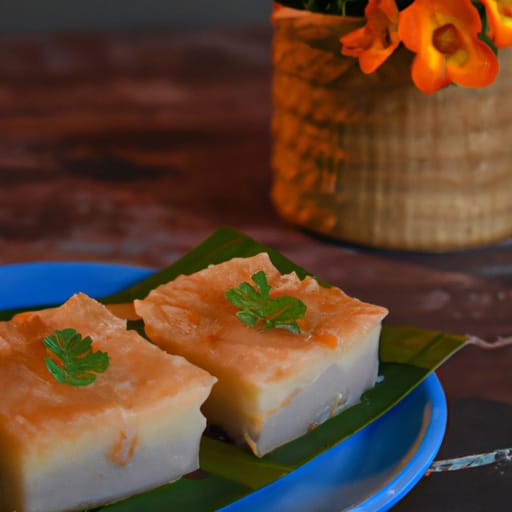Bringing the Traditional Delicacy of Vietnamese Cassava Cake Home
Vietnamese Cassava Cake is a traditional treat that is wonderfully simple to make and filled with delightful flavors. Sweet and salty, this dish is one of the most beloved desserts in Vietnamese culture and can be enjoyed by people of all cultures.
So why is it so beloved? The delicate balance between the sweetness of cassava and the savory salty flavor of shrimp makes this dish a timeless classic, making it intensely flavorful and enjoyable. Plus, the fun role of creativity each person puts in the design of the cake is said to be part of why it’s so popular.
Ingredients:
-1 pound of freshly grated cassava
-3/4 cup of white sugar
-1 teaspoon of salt
-1/2 cup of shrimp, peeled and chopped
-3/4 cup of coconut milk
-1/4 cup of coconut cream
Method:
1. Preheat the oven to 350°F, and lightly greased a 9-inch cake pan.
2. In a mixing bowl, combine the cassava, sugar, and salt until they form a uniform texture.
3. Add the chopped shrimp and mix it until it is evenly distributed.
4. In another bowl, combine the coconut milk and coconut cream until they form a uniform texture, then add them to the cassava and shrimp mixture.
5. Pour everything into the greased cake pan, then top with slices of yound coconut.
6. Bake for 40 minutes or until a toothpick inserted in the center of the cake comes out clean.
7. Let the cake cool for 10 minutes before turning it out onto a wire rack.
Serving:
Vietnamese Cassava Cake is best served at room temperature, as the flavors are most pronounced when the cake is not too hot or cold. Cut into slices and enjoy as-is, or top with powdered sugar, grated coconut, or drizzles of honey.
This traditional Vietnamese delicacy is a great option for any occasion, from an afternoon treat to a special dessert. Not to mention the slight variations in the recipe, such as the use of taro root in certain regions instead of cassava, allowing for endless creativity. Is there a better way to show your love and appreciation for the uniqueness of Vietnamese cuisine than by trying a classic such as this?




